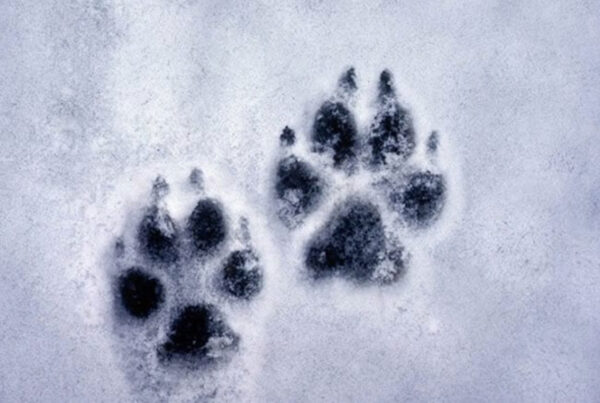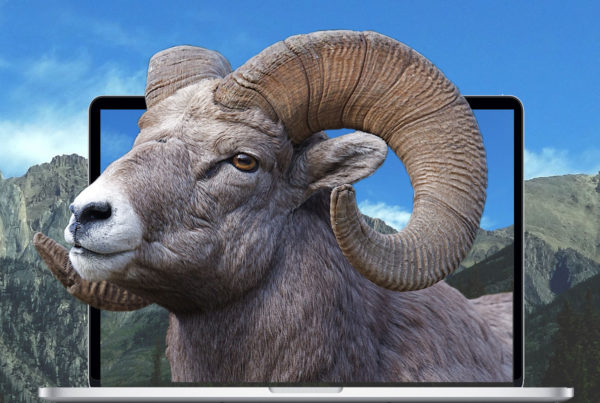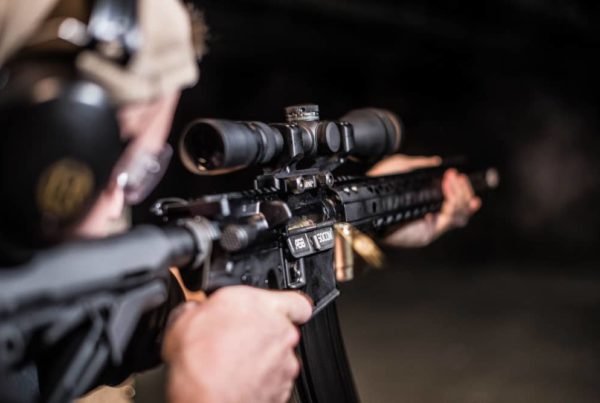
Influencer marketing in the hunting, outdoor and firearms industry has been a tried and true method of connecting with hard to reach demographics since the days of Buffalo Bill.
Often referred to as Pro Staff or Ambassadors—top hunters like Jim Shockey, Brian “Pig Man” Quaca, or shooting professionals like Colion Noir and Julie Golob and hundreds of others—have been commissioned by the industry’s top brands to exert their influence over their vast number of social media followers.
Consumers trust recommendations from a third party more often than a brand itself. And it makes sense if you think about it in a more personal context. You don’t usually trust a person at a party who comes up to you and brags about him/herself and spouts fun facts about his/her personality to convince you to be a friend. But you often believe your mutual friend who vouches for that person. An influencer is a mutual friend connecting your brand with your target consumers. (Source: Kissmetrics)
In this post, I answer five questions about influencer marketing that will help you understand how to integrate this powerful tactic into your marketing strategy.
1. What is influencer marketing?
Influencer marketing is a type of marketing that uses category leaders or celebrities to communicate your brand’s message and content to their vast number of followers. Instead of buying print ads or filming commercials, you use the influencer to get the word out for you instead.
Influencer marketing typically involves content marketing and social media as the mechanisms to propel those messages. Whether they are producing the content themselves like Mia Anstine for Beretta or you are writing it for them and putting their name on it—influencer marketing almost always involves the tactics of content marketing with social media as its primary distribution channel. (Source: TapInfluence)
2. How do you find the right influencer?
Did you know that just 3% of people generate 90% of the impact online? Considering this alarming statistic, it should come as no surprise that leveraging the power of this select group of influencers serves as a highly valuable strategy for businesses looking to expand their reach. (Source: HubSpot)
Gear up for your huntin’ & fishin’ days with @LukeBryanOnline‘s #HFE: https://t.co/KFm0VcQOiq pic.twitter.com/Qf8QI8wl0S
— Cabela’s (@Cabelas) July 15, 2016
In the hunting, outdoor and firearms world, the industry is full of shooting, firearm hunting experts, and proponents that blog and create videos. A few are popular celebrities like Luke Bryan or nationally syndicated radio host Dana Loesch. Below, I used Followerwonk and Buzzsumo to identify top Instagram accounts of industry advocates that have large audiences to get an idea of the numbers we’re talking about.
- Dana Loesch / 444K
- Ted Nugent / 374K
- Matt Staser / 132K
- Michael Waddel / 141K
- Eva Shockey / 76.2K
- Colion Noir / 229K
- Fred Mastison / 51.5K
- Jim Shockey / 63K
- Greg Kinman / 53.5K
- Mark Kenyon / 44K
- Steven Renella / 32.7K
But how do you go about finding and choosing the right influencer? Do you go for a big name like Matt Staser in the hunting category who has over 147K followers on Twitter—or someone less known but who has a very niche group of fans—otherwise known as “power-middle” influencers? Both have pros and cons and will ultimately depend on your product’s contextual fit and marketing budget. There is growing evidence that “power-middle” influencers (2.5K – 25K followers) are shown to have a 16x higher engagement.
To find your perfect influencer, you can start with good ole’ fashion research. Or you can pay for the latest and greatest influencer marketing software to help you find that perfect influencer as well as track ROI. Here are a few to check out:
You can also use sites like Alltop, Buzzsumo, Followerwonk or Kred to start your search. While someone with hundreds of thousands of social media followers certainly could expose your brand to their followers, if they are not a snug contextual fit, their post or tweet would be moot as far as driving leads and customers. (Source: Kissmetrics)
 3. How to start with influencer marketing?
3. How to start with influencer marketing?
Influencer marketing starts with your ideal influencer image—and if your product fits within the context of what your influencer typically talks about and how they align with your buyer persona(s). You wouldn’t hire Justin Beiber who has over 88M followers to tweet out a picture of your Deer Scent Product next to a fallen Buck (although that may be kinda funny).
Create your ideal influencer based on age, gender, location, vertical, personality and average audience size. Next figure out, where can your brand’s content can be amplified. Do you need the visual component of Instagram or Pinterest or something more substantive and instant like Facebook or Twitter? Are you looking for social media followers, website traffic or both? Define your goals and begin your search.
According to Social Chorus, the best way to reach out to influencers is to start by getting their attention on social media through likes, retweets, mentions and shares. Then you’ll want to reach out via email. Keep your email simple, introduce your brand, why you’re interested and describe what you both can expect to gain through the relationship. You can negotiate your engagement by direct sponsorship, sponsoring their giveaways, content collaboration, shout outs or commission.
@joshuajclaflin good article! Thanks for the mention!
— Eva Shockey-Brent (@EvaShockey) May 23, 2015
4. How to measure influencer marketing?
Below are three ways influencer marketing can be tracked during a campaign.
- Trackable links: Most software programs have their own conversion tracking technology that enables you to track how many online sales each influencer drove for you. However, trackable links can only be posted on platforms like Twitter, Facebook, and blogs.
- Promo codes: Not only do promo codes help you track the impact of your campaign, but they also build urgency and an extra incentive for viewers to buy your product.
- Correlation: This entails correlating the time of posting with increases in sales or installs.
(Source: Ready Pulse )
5. Brands doing it right.
As I looked across the industry, here are some examples of brands that base a large majority of their strategy on influencer marketing:
Yeti
Yeti’s influencer marketing program is known as probably the best in the outdoor industry. “We do a lot of endorsements, from celebrity hunters to fishermen, and always try to engage them as ambassadors of the brand and then tell their stories in as many places as we can.”
—Corey Maynard VP of Marketing (Source: Adweek)
Cabela’s
Cabela’s has about 20 “authenticity experts” who are asked to chime in on their areas of expertise (hunting, fishing, camping, etc.) to make sure their messaging truly matches the outdoor and hunting space. These are people who volunteer to participate because they are passionate about their own experiences, social media, and Cabela’s brand. (Source: Convince and Convert)
What’s your proudest moment? #AllforThis
Video by @OUTDChannel @SPORTSMANchnl @WFN & feat. @JimShockey_ pic.twitter.com/WuBOtuc3mT
— Cabela’s (@Cabelas) September 9, 2016
Mountain Ops
Mountain Ops uses several hunters/huntresses or “wilderness athletes” to inspire and help you get in “outdoor shape.”
Glock
Glock may be the first in the industry to start using Facebook Live. This is a great example of mixing influencer marketing, content and live video.
Don’t miss it! The last episode of Train with Shane is next Thursday at 7pm ET on Facebook Live. pic.twitter.com/fGZjNBVIAr
— GLOCK Inc. (@GLOCKInc) September 21, 2016
Consumers have always valued opinions expressed directly to them. Marketers may spend millions of dollars on elaborately conceived advertising campaigns, yet often what makes up a consumer’s mind is not only simple but also free: a word-of-mouth recommendation from a trusted source. (Source: McKinsey)
So, is influencer marketing a right strategy for your brand? Here are a few statistics:
- 78 percent of brands increased their content output in the last two years, but average content engagement decreased by 60 percent. Content marketing needs influencer marketing to succeed.
- 92 percent of people trust recommendations from individuals (even if they don’t know them) over brands.
- 74 percent of consumers use social media to make purchase decisions.
- 81 percent of marketers who have used influencer marketing judged it to be effective.
- 59 percent of marketers will increase influencer marketing budgets in 2016. Make sure you pick the right influencers for your brand. They’ll be in bigger demand.
(Source: Ion)
In the hunting, outdoor and firearms industry, I’d say there is overwhelming evidence that influencer marketing is a good way to move the needle. Combined with inbound or content marketing, influencer marketing could be the strategy you’re looking for.
@garrisoneverest pretty close to what I’d say.
— Willie Robertson (@williebosshog) October 9, 2014
What about you, what are your thoughts on influencer marketing?








